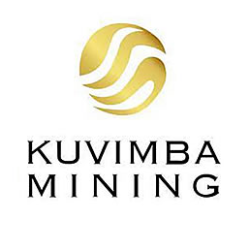Kuvimba seeks US$150m for Shamva & partners for Freda Rebecca
HARARE – Kuvimba Mining House (KMH) is seeking to raise US$150 million to develop an open cast mine at its Shamva gold mine as well as build a processing plant, which would help it boost production by 50%. It also needs partners who can invest in extending the life of Freda Rebecca beyond the current five years.
Head of the KMH gold cluster and Freda Rebecca managing director Patrick Maseva-Shayawabaya told journalists yesterday during a tour of the gold mine that the group is pursuing talks with equity partners and financiers to raise the amount. “We could accept someone who could take a big chunk (of shareholding in Shamva), let’s say 40%, but not a majority stake. The financing could also be secured through debt. However, discussions are still at the early stages.”
The gold cluster includes gold mines such as Freda Rebecca Gold Mine, Shamva Gold Mine, and Jena Mine in the Midlands, which generate a combined monthly average of 300 kg of gold. Of that output, Freda contributes 70%, Shamva 20%, and Jena at 10%.
The KMH gold cluster produced 104,000 ounces of gold in the fiscal year ended March 2024, and output is expected to improve slightly this year. “We’re targeting to produce around 106 000 ounces of gold.”
Maseva-Shayawabaya said for this year, the gold cluster has a capex budget of US$40 million for the three companies, which will mostly go towards exploration. “The capex will be divided into three categories: the ZESA power supply line for Freda Rebecca Mine, tailing storage facility (TSF) at Freda and Jena mines, and exploratory efforts at all three gold mines.”
At Freda, 2.6 million tonnes of ore are processed each year but only 3.6 tonnes of gold are milled, hence the majority of the 2.6 million tonnes of waste ends up being put in the tailings dam. He said the storage facilities will cost between US$18 million and US$20 million dollars. “We are constructing a seven-kilometre power line linking the Freda plant to the Trojan substation, and it will cost us US$2 million.”
Meanwhile, KMH has implemented a system established by Comstack to improve gold traceability from mine to market, making the miner the first to have the system installed in Zimbabwe and one of the top five in Africa.
“It’s very important that our gold production is traceable from mine to market. And that is really to ensure that people have confidence in our legitimacy and understand that the gold that we do produce is actually gold that we’ve mined, gold that we’ve processed, and gold that we then sell to the market,” acting Chief Executive Officer Trevor Barnard also told the media.
“The Comstack system applies across the board, at the moment we have only implemented it for gold because that’s really the only mineral or metal that we sell in large quantities internationally,” he said.-finx










